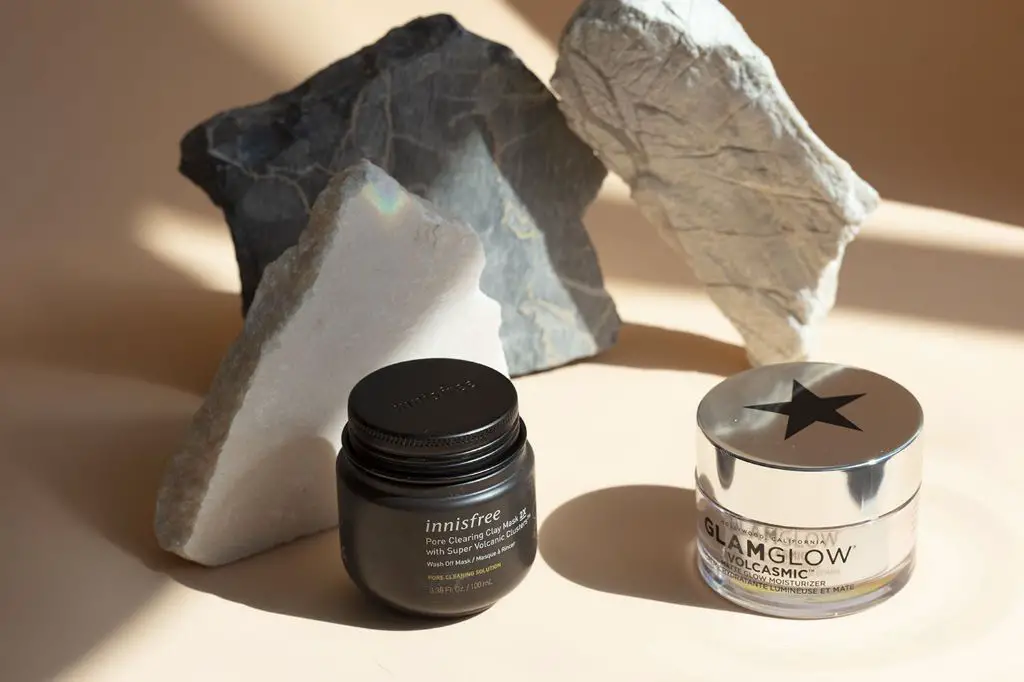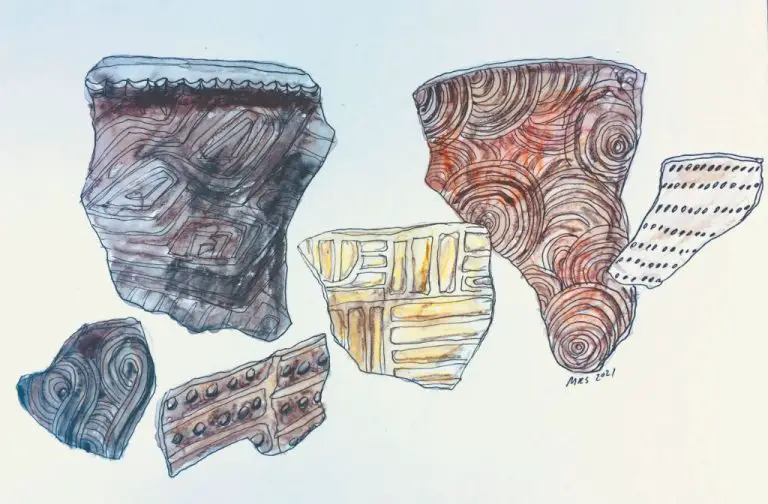How Do You Make Volcanic Ash?
What is volcanic ash?
Volcanic ash is a natural byproduct of volcanic eruptions. It consists of tiny jagged particles of rock, minerals, and volcanic glass that are expelled into the air when a volcano erupts. The ash forms when gases dissolved in molten rock (magma) expand and escape violently into the air, and also when magma is blown apart by explosions. This causes the magma to cool and fragment into fine particles.
According to the US Geological Survey, volcanic ash is made up of various amounts of silica, aluminum, iron, calcium, sodium, and magnesium. Its chemical composition varies depending on the composition of the magma from which it erupted. The physical characteristics of ash particles also differ based on the type of volcanic activity that produced them.
Studying the composition of volcanic ash provides important insights into the nature of volcanic eruptions. Chemical analysis can reveal details about the temperature and explosive power of the eruption. Ash composition can also help predict potential impacts on infrastructure, aviation, human health and the environment when ash is dispersed over large areas.
Where does volcanic ash come from?
Volcanic ash is formed during explosive volcanic eruptions that violently fragment magma. As magma rises toward the surface, dissolved gases come out of solution and form bubbles. This decreases the density of the magma, making it more buoyant and increasing internal pressures. Eventually, the expanding gases cause the magma to explosively fragment into tiny particles that are rapidly propelled into the air in an eruption column. This fragmented material is known as volcanic ash and pumice.
The violent fragmentation of gas-rich magma generates a mix of fine ash and coarser fragments called pyroclasts. Pyroclastic particles cover a wide range of sizes from fine ash (<2 mm) to blocks and bombs (>64 mm). But volcanic ash specifically refers to the finest fraction under 2 mm in size that can remain suspended in eruption columns for long distances. The explosive nature of volcanic eruptions that generate ash is critical, as it provides the energy to shatter magma and propel fragments high into the air where they can travel far away from the vent before settling.
Some key types of explosive volcanic eruptions that produce abundant ash include:
- Plinian eruptions – Named after Mt. Vesuvius’ 79 AD eruption, these eruptions have high magma discharge rates and can inject ash over 50 km into the stratosphere.
- Vulcanian eruptions – Short, violent eruptions driven by volatile buildup in a plugged vent.
- Phreatomagmatic eruptions – Explosive eruptions fueled by external water interacting with magma.
In essence, volcanic ash represents the fine, easily airborne fraction of pyroclasts generated in explosive volcanic eruptions. The violent fragmentation and ejection of gas-rich magma is fundamental to producing the tiny ash particles that can travel across vast distances.
(Information adapted from: https://www.geological-digressions.com/volcanics-in-outcrop-pyroclastic-fall-deposits/)
Chemical Composition
Volcanic ash has a complex chemical composition that can vary depending on the magma composition and eruption conditions. Some major elements commonly found in volcanic ash include:
- Silica (SiO2) – Silica content can range from 45% to 75% and influences the viscosity of magma. Rhyolitic ash tends to have higher silica content.
- Aluminum (Al2O3) – Ash can contain 10-20% aluminum which comes from minerals like feldspar.
- Iron (FeO) – Ash may contain 5-14% iron from minerals like magnetite and hematite.
- Magnesium (MgO) – Magnesium oxide makes up around 1-5% of ash.
- Calcium (CaO) – Ash can contain 3-8% calcium from minerals like anorthite and augite.
In addition to major elements, ash contains trace elements like titanium, manganese, phosphorus, and sulfur at less than 1% composition. The exact chemical signature depends on the magma source and can help identify the origin of ash particles (Langmann, 2013).
Physical properties
Volcanic ash particles have a wide range of physical properties that depend on factors such as the composition and temperature history of the magma. Some key physical properties include:
Particle size distribution – Volcanic ash particles can range from 2 mm down to less than 1 micron in diameter, with most ash finer than 100 microns. The size distribution depends on factors like the explosiveness of the eruption. More violent eruptions produce finer particles. Effects of crystallographic properties on the ice nucleation behavior of volcanic ash particles.
Shape of particles – Ash particles can be highly irregular in shape, from blocky shapes to thin, curved shards. The morphology depends on the original minerals and cooling/fragmentation process. More angular, blocky particles are formed when the magma cools slowly before eruption.
Color – Fresh volcanic ash is usually light gray to black in color, but can also contain reddish or brownish particles fromoxidized minerals. The color depends on the composition, with mafic ash darker than felsic. Over time, ash often weathers to paler colors like tan or yellowish. Size limits for rounding of volcanic ash particles heated by lightning.
How particle size affects ash properties
The particle size of volcanic ash can have significant effects on its properties and behavior. According to a 2018 study published in ScienceDirect, “As grain size shrinks, full beads replace porous beads and the density increases” (https://www.sciencedirect.com/science/article/pii/S2451904917305218).
Smaller ash particles, generally defined as less than 2 mm in diameter, can travel farther distances when ejected into the atmosphere. Their tiny size allows them to remain aloft for longer periods. In contrast, larger particles above 2 mm tend to fall out of the eruption plume more quickly due to gravity.
Particle size also impacts the surface area and reactivity of ash. As a 2020 study in SpringerLink notes, “The smaller the particle size, the larger the specific surface area, and the stronger the activity of the volcanic ash” (https://link.springer.com/article/10.1007/s11665-020-05108-x). The higher surface area to volume ratio of tiny ash particles makes them more chemically reactive.
Methods to analyze ash
There are several techniques used to analyze the physical and chemical properties of volcanic ash, including:
Scanning electron microscopy (SEM) – SEM uses a focused beam of electrons to image the surface topology and morphology of ash particles at very high magnifications. The interaction of the electrons with the sample provides information about the chemical composition, crystalline structure, and size/shape distributions of the ash.1
X-ray diffraction – This technique identifies the mineralogical composition of crystalline materials by analyzing the diffraction pattern of X-rays hitting the sample. It can determine the abundance of various minerals like quartz, feldspar, and mica in a volcanic ash sample.2
Particle size analyzers – These instruments measure the size distribution of ash particles, which has implications for ash transport and dispersion. Methods include laser diffraction, dynamic light scattering, sedimentation, and imaging techniques like SEM.1
Uses and applications
Volcanic ash has a variety of uses and applications due to its unique physical and chemical properties. Some of the most common uses include in cement, concrete, abrasives, and soil enrichment.
Cement and concrete production is one of the largest uses of volcanic ash. The silica and alumina in volcanic ash react with calcium hydroxide released during the hydration of Portland cement, forming compounds that provide additional strength and durability to concrete (https://www.ncbi.nlm.nih.gov/pmc/articles/PMC7962944/). The small particle size and porous nature of volcanic ash allows it to finely distribute through concrete and fill small pores, resulting in a denser, stronger material.
The abrasive properties of volcanic ash also make it useful for a variety of purposes. It can be used as an ingredient in soaps, skin exfoliants, toothpaste, and household cleaners. The hardness of volcanic ash varies based on its mineral composition, but materials like pumice contain abundant silica making them mildly abrasive. The irregular angular particles are effective for gently scrubbing surfaces (https://www.kgs.ku.edu/Publications/Bulletins/96/06_uses.html).

When used as a soil amendment, volcanic ash provides nutrients and improves soil texture. The ash contains essential plant nutrients like potassium, phosphorus, calcium, and magnesium that are released slowly as it weathers. It also increases soil aeration, water retention, and cation exchange capacity. Overall, adding volcanic ash can improve fertility and productivity of agricultural soils (https://www.quora.com/What-are-some-of-the-uses-of-volcanic-ashes).
Hazards of volcanic ash
Volcanic ash poses a variety of hazards and risks to humans, infrastructure, and aviation. Some of the main dangers include:
Respiratory effects – Fine ash particles can be inhaled and cause respiratory problems, especially for those with pre-existing conditions like asthma. The small size allows the particles to penetrate deep into the lungs. Exposure to ash has been linked to increased respiratory illness and death rates. Health impacts of volcanic ash
Infrastructure damage – Ash accumulation on rooftops can cause collapse under the immense weight. It can clog drainage systems and damage wastewater treatment plants. Ash reduces visibility and can short circuit electrical transformers. The abrasive properties of ash leads to increased wear on moving parts in vehicles and machinery.
Impacts on aviation – Fine ash particles cause abrasion damage to aircraft engines and windows. The particles melt in the high heat of jet engines forming glass deposits. This can lead to surges, flame outs, and total power loss. Ash also reduces visibility and damages navigation systems. Air traffic is often halted during and after ash eruptions.
Simulating volcanic ash in the lab
There are several reasons scientists want to simulate volcanic ash in laboratory settings:
Simulating ash allows researchers to study its properties and behavior in a controlled environment. This helps them understand phenomena like ash transport and dispersion during an eruption (Cao et al., 2021).
Ash samples can be scarce after eruptions. Simulating ash provides a consistent and abundant source for testing and analysis (LLNL, 2019).
Experiments with synthetic ash enable the validation of computer models used for ash dispersal forecasting (BGS, n.d.).
There are several methods used to produce synthetic volcanic ash in the laboratory:
Milling natural ash samples into specific grain sizes.
Sintering major oxide components found in volcanic ash at high temperatures.
Melting volcanic rocks like basalt and rapidly cooling the melt to form fine ash particles.
Simulating phreatomagmatic eruptions by combining hot volcanic material and external water in a controlled setup.
3D printing ash particles based on scanning data of real ash morphology.
Conclusion
Volcanic ash is a complex natural material with unique properties based on its chemical composition and particle size distribution. By studying ash samples from past eruptions and simulating ash in the laboratory, scientists gain critical insights that can help predict hazards and mitigate risks when future eruptions occur.
The key points covered in this content included:
- Volcanic ash forms during explosive volcanic eruptions and consists of tiny jagged particles of rock and volcanic glass.
- The chemical makeup of ash depends on the composition of the original magma and can consist of various minerals and volcanic glass.
- Ash particle size can range from fine powder to sand-sized grains, affecting its behavior in the atmosphere and potential impacts.
- Advanced analytical methods help characterize ash physical and chemical properties.
- Volcanic ash has several industrial uses but also poses respiratory, infrastructure, aviation, and environmental hazards.
- Simulating ash in the laboratory provides a controlled environment to study its properties.
Continued research on volcanic ash is critical for increasing preparedness and mitigating risks from volcanic eruptions worldwide. Studying past ash deposits provides clues to a volcano’s past behavior and can help forecast future activity. Analysis of ash properties leads to better prediction models of ash dispersal in the atmosphere. By furthering our understanding of volcanic ash, the volcanology community can better protect populations in the shadow of active volcanoes.




